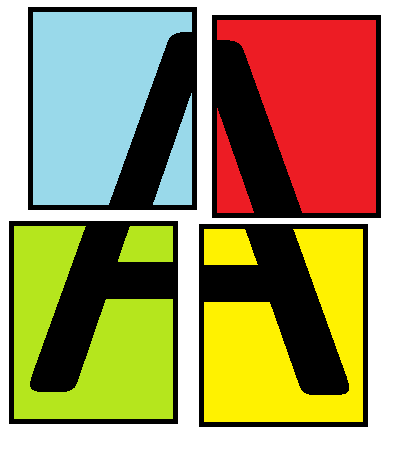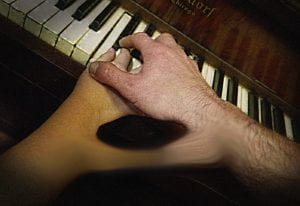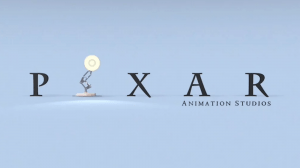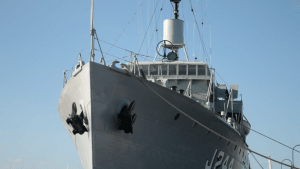“Escape the Mortifying Ordeals of Being Known”
For our final assessment of Entangled Media we decided to create an escape room. We thought this would be a good idea because it meant that we could include a variety of mediums, and really play into the notions of meshwork and entanglement. I personally found that constructing our exhibition around the use of an entire space worked a lot more effectively than having to constrict it into one website/document like we did in Assignment 2. I was taking a lot of inspiration from the reading discussing immersion and virtual reality that I briefly referenced in Assignment 2 from Kwastek (2015), she described the concept of flow in an interactive space, as the audience gets caught up in the flow of the piece, it allows them to become invested in both the narrative and the concept:
“In interactive art, how the living, breathing participant actually acts is crucial to the realization of the artistic concept, which, in its realization, asks to be both experienced and contemplated.” (1)
Our group worked very similarly to how it did in Assignment 2, I pitched outlandish ideas about making our work immersive, wanting to include neon lights, strange sounds, eerie visuals and bizarre aesthetics, virtually creating a space separate from the room that it was in. Jeevan then structured those ideas and figured out ways to turn it into a project: hence the idea of an escape room, and then Leah figured out how to make those ideas into a narrative, and produce an engaging story with characters and objectives. We researched escape rooms, and found they could increase peoples interactivity:
“Educators in various disciplines have found that the use of puzzles and gamification increases students’ participation and engagement”
-Ho (2018) (2)
Once we had figured out the story and our objectives, we split up the work a lot more starkly than the last assignment, we each chose a media mode to produce based on our experience, equipment and ideas. Jeevan chose audio, Leah chose text, and I chose video, it made for a range of very different and unique ways of having a letter be secrtely conveyed. Photography was kind of left out initially, I think we each assumed that someone else would take care of it.
I didn’t really think about what I was signing myself up for when I chose to do the video, because it took me hours not only to film, but to edit. I got my housemate, Alex Brien to act as the policeman, my other housemate Timothy Kroschel to film and his friend who I’m not even that familiar with to hold the boom mic, and if it wasn’t obvious, I’m the one in the mask.
The questions that arose in our group were usually around ways of structuring the escape room, obviously we couldn’t actually stop people from escaping, and we wanted to have minimal interaction with the people that were inside of the space. We were constantly questioning how difficult we could make things without making it too hard. Often, we were worried that our tasks were too easy, and people would solve them too quickly, but it was difficult to tell when we were the ones who made the puzzles and knew exactly how to solve it. The fact that we separated our work made it easier to make the final call, because we weren’t completely familiar with the work that our other group members had produced, and we could give feedback to each other.

The photography ended up being quite last minute, we initially wanted to find areas where it looked like letters were hidden, buildings that vaguely shaped the letter ‘A’. But Jeevan and Leah were worried we were out of time and both wanted to draw a capital A over 4 photos like this:
I must’ve been in a bad mood that day, because I really strongly rejected that idea and pushed for the smudging of photos to create A’s because I felt that it fit better with the aesthetic of the piece, I got Jeevan and Leah to send me some photos of things to turn into ‘A’s, and used some old family photos which I thought portrayed an older aesthetic. I created 6, and we used the best 4. (You can see all 6 in the resources post linked above) In future work, we discussed wanting to create a full-fledged escape room, and how we would go about doing that. A journal we took concepts from Hutchby about the way in which technology is only limited to the way humans interacted with it got us thinking about ways we could use technologies in different and unique ways.
“In this way, technologies can be understood as artefacts which may be both shaped by and shaping of the practice’s humans use in interaction with, around and through them.” (3)
We’ve learnt a lot about immersion and interactivity through this exhibition, so for future projects we would like to continue to make our work engaging in unique ways, and hopefully finding ways to incorporate interactivity and create complex entanglements of ideas.
The way people engaged with our work in the exhibition was actually more positive than we even expected. I’m pretty sure the fact that our space was the only space in the exhibition that was completely closed off from any other space in the building made it a bit more alluring. We limited the amount of people that could come into the space to five at a time, which created a sense of mystery that kept people coming. It felt like we were at a carnival and people would take turns trying our ride. This came with downsides however, because Jeevan and I were unable to really leave the space, we constantly had to monitor it, both to make sure that people didn’t break anything trying to solve the puzzle, and reset everything after the puzzle was solved. This meant that we didn’t get much of a chance to check out other people’s work for inspiration on future projects. Jeevan and I didn’t take much of a liking to the Rosslynd Piggott exhibition either, we found a lot of the art to be really abstract but in a simplistic way, and we didn’t find ourselves immersed in the experience at all, however, we found a room illuminated by neon lights with art crafted in a traditional style created by aboriginal people to be quite beautiful, and we took inspiration from that.
Because we only had a limited amount of time to showcase our exhibition, we limited the amount of time people had to see our escape room to 15 minutes, but this consequently made people competitive, and they would quickly try to figure out each letter to beat the previous person. I was both for and against this. On the plus side, it meant that people were more engaged with our piece because it had a more competitive allure to it. On the negative side, it meant that people weren’t taking in the atmosphere of the piece and they were predominantly ignoring the narrative. People didn’t seem actively engaged in the interrogation video or the phone call audio, (apart from Paul) they were just listening out for letters, numbers and Morse code tones. After talking to some of our classmates about it, we concluded that it’s very difficult to make somebody engaged with a character in such a short amount of time.
I initially chose the Entangled Media studio because I was passionate about the idea of “crafting stories that weave in various modalities – sound, vision, text – to see connections in new ways” I initially thought it would be based strongly on narrative, and I assumed we’d be making stories and documentaries that that looked very professional and carefully structured, My ideas about ‘entangled media’ changed in the sense that the idea is a lot more conceptual and fluid than I initially thought. I liked the way that Janet Murray (from Week 7’s class) discussed the idea of an evolving media:
“When a new medium appears, we copy preexisting practices into it, in what Murray dubs “additive art”: theater staging for early films, for example.” (4)
The idea that each new platform has affordances and constraints was particularly interesting in an escape room, because I felt having an entire space would actually give us a lot more freedom to explore entangled media more in depth. It did in some ways, but it was really quite difficult to have each medium working together efficiently and coherently. I found once we grasped the concept of entangled media in the later weeks of class, we were able to use it as a underlying guide for our work that kept us thinking of ways to make media more complex and creative. The lack of constraints in the third assignment had us really scratching our heads thinking of ways we could incorporate a range of texts that complimented each other.
In my first year of University, I took a studio called the Mechanics of Immersion with Daniel Binns and Darren Verhagen. I was still new to university and despite the fact that I loved the class, I wasn’t very good at it. I felt that Entangled Media discussed similar themes but with more ambiguity, academic interpretation and creative freedom. Throughout this course, I felt I was able to express and build on the ideas that I’ve learnt throughout my entire degree from other classes and studios. I found the concept of entangled media to be about the layers and variety of contributing factors that make up a finished piece of work, not just in media, but a variety of things we experience and contribue to on a day-to-day basis.
- Liptay, F, Burcu, D, Kwastek, K, 2015, Immersion in the Visual Arts and Media, Immersed in Reflection? The Aesthetic Experience of Interactive Media Art, BRILL, Sponsored by the Leiden, Federal Ministry of Education and Research pp 69 – 71
- Ho, A 2018, ‘Unlocking Ideas: Using Escape Room Puzzles in a Cryptography Classroom’ PRIMUS, vol. 28(9), pp. 835-847
- Hutchby, I 2001, ‘Technologies, Texts and Affordances’, Sociology, Vol. 35(2), pp.441-456
- Bryan, A. The New Digital Storytelling 2011: Creating Narratives with New Media, ABC-CLIO, LLC, ProQuest Ebook Central




















